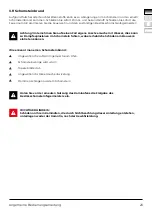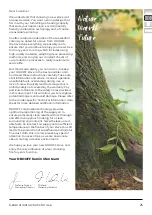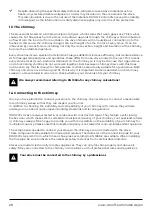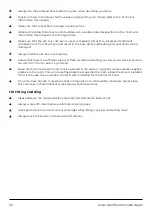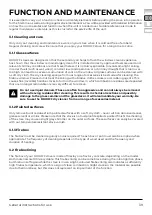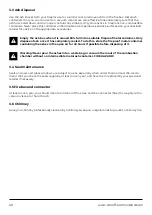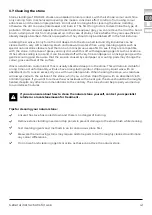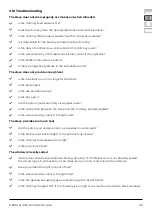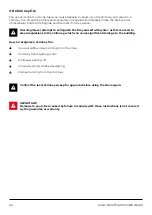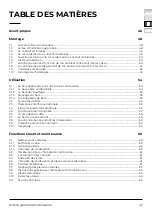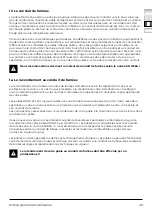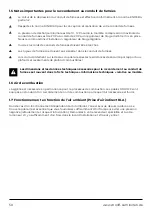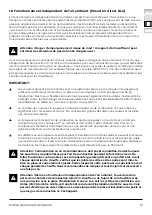
www.drooff-kaminofen.de/en
36
2.5 Stove functions
Primary air is required for heating. This is fed into the burning process from below through
the grate.
Secondary air is required when burning long-flame fuels, such as logs or wood briquettes,
and is supplied to the combustion from above. At the same time, the secondary air serves
as window flushing air to ensure the window stays clean.
DROOFF stoves are available with two different air control systems: Either with separate control
of the primary and secondary air via two air sliders, or with a single-hand control that controls
both air flows at the same time.
DROOFF stoves are built according to construction type 1, which means they incorporate a
simple safety system. If you forget to close the fire door properly after adding fuel, it will close
automatically and prevent any burning firewood from falling out. Nevertheless, you should still
take care to close the firebox door at all times.
DROOFF deliberately refrains from the use of riddling grates. These date back to the time of
coal stoves, when it was still necessary to occasionally ‘riddle down’ the ashes. With a wood fire,
this is not only unnecessary, but also harmful to the environment, because the riddling shakes
up an unnecessary cloud of fine dust. Most DROOFF models feature a two-part, lockable cast-
iron grate. During the heating phase, this grate should always be open in order to supply the
primary air to the fire from below so that the wood burns quickly. The grate should be closed if
the wood inside is fully alight to prevent embers from falling into the ash box where they do not
burn cleanly or completely due to the lack of oxygen. This will allow you to save on heating costs
and avoid unnecessary emissions.
DROOFF stoves are equipped with their own ash box or ash pan, which collects any ash that falls
through the grate. The amount of ash depends on both the heating intensity and the fuel and
usually has to be disposed of after a few days.
DROOFF stoves feature a central outside air connection, which is mainly required if the installation
site is very compact. This allows the combustion air to enter the firebox from outside. Contact
your local chimney sweep to establish whether you need an outside air connection.
One final note:
If your stove is not connected to the outside air, please be aware that you must ensure
that there is a sufficient supply of fresh air when you put your stove into operation.
Your stove consumes around 10 m
3
of air to burn 1 kg of wood.
Stove paint is designed to offer mechanical hardness and colour retention at high
temperatures; however, it is neither water-repellent nor particularly protective against
corrosion. Please only use dry methods of cleaning for painted surfaces and avoid
introducing moisture into the firebox. This can enter the appliance as a result of heating
too cautiously, using firewood with too much residual moisture, or – in the case of an
outside air connection – condensing outside air. Always use enough kindling, only use
firewood with a residual moisture content of less than 20%, and close the air sliders on
your appliance when it is not in use – especially over the summer months!
Summary of Contents for Andalo 3 L
Page 2: ...2 ...
Page 3: ...Deutsch 4 English 25 Français 46 Nederlands 67 3 ...


